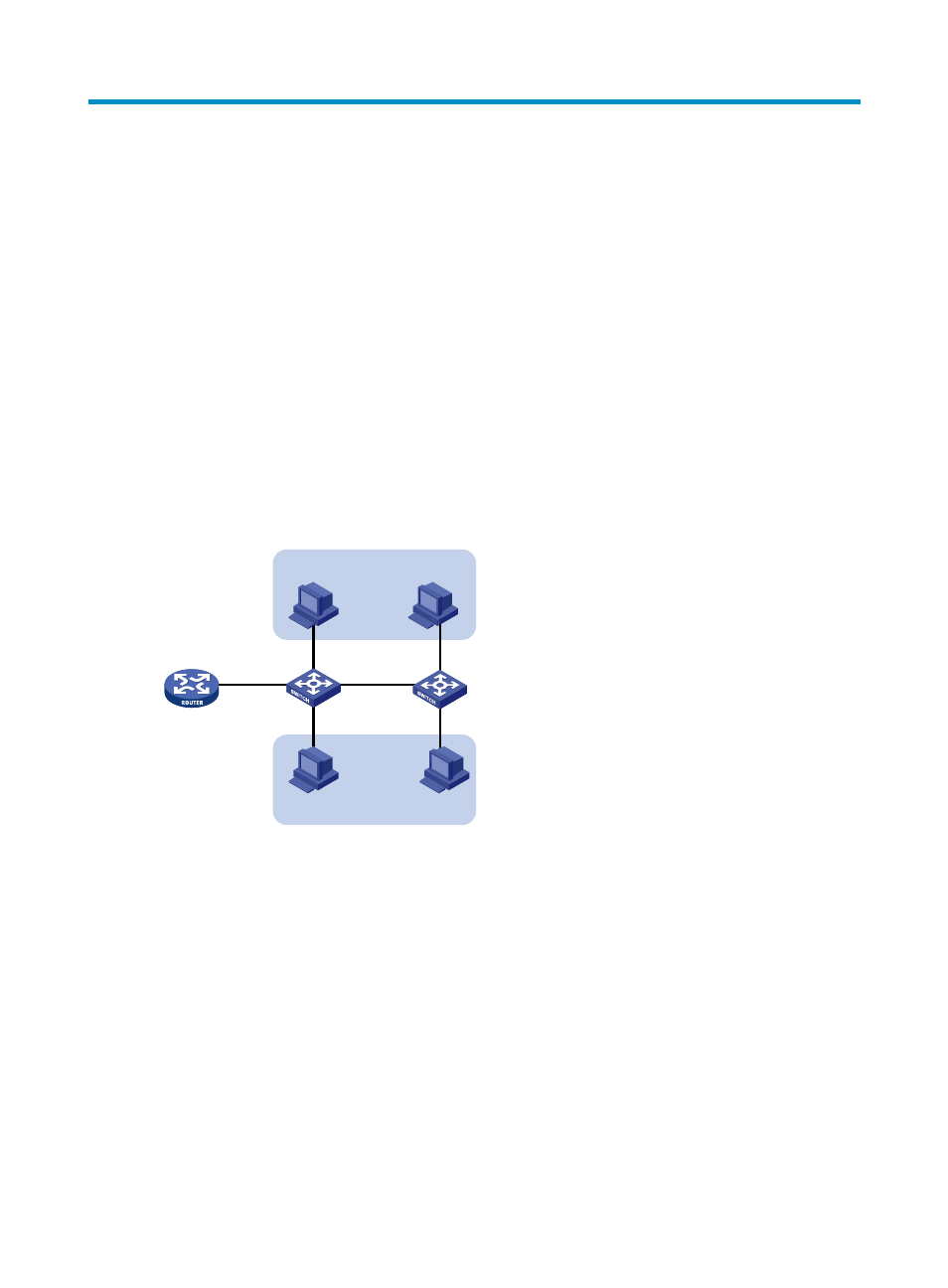Configuring vlans, Overview – H3C Technologies H3C WX5500E Series Access Controllers User Manual
Page 120

109
Configuring VLANs
This chapter describes how to configure VLANs.
Overview
Ethernet is a shared-media network based on the CSMA/CD mechanism. A local area network (LAN)
built by using Ethernet is both a collision domain and a broadcast domain. In a LAN with plenty of hosts,
the LAN may be full of collisions and broadcasts, and the LAN performance is degraded or even
becomes unavailable. You can deploy bridges or Layer 2 switches in the LAN to reduce the collisions,
but this cannot confine broadcasts. To address the issue, virtual LAN (VLAN) was introduced to break a
LAN down into separate VLANs. Hosts in the same VLAN can directly communicate, and hosts of
different VLANs cannot directly communicate. For example, hosts in VLAN 2 can communicate with each
other, but cannot communicate with the hosts in VLAN 5. A VLAN is a broadcast domain, and contains
all broadcast traffic within it, as shown in
Figure 32 A VLAN diagram
A VLAN is logically divided on an organizational basis rather than on a physical basis. For example,
using VLAN, all workstations and servers that a particular workgroup uses can be assigned to the same
VLAN, regardless of their physical locations.
VLAN technology delivers the following benefits:
•
Confining broadcast traffic within individual VLANs. This reduces bandwidth waste and improves
network performance.
•
Improving LAN security. By assigning user groups to different VLANs, you can isolate them at Layer
2. To enable communication between VLANs, routers or Layer 3 switches are required.
•
Creating flexible virtual workgroups. Because users from the same workgroup can be assigned to
the same VLAN regardless of their physical locations, network construction and maintenance are
much easier and more flexible.
VLAN 2
VLAN 5
Switch B
Switch A
Router